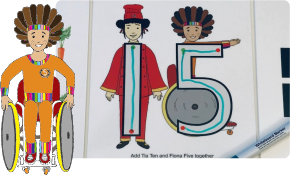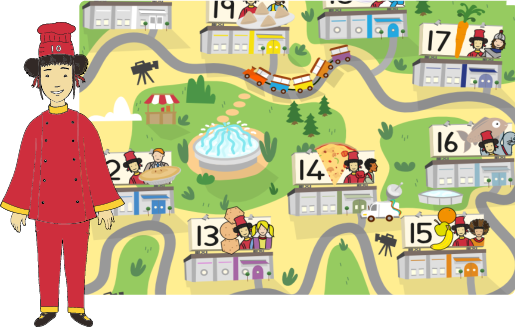Children are often very good at counting out loud to 10 and even further, but it does not always follow that they can write the numbers correctly or that they understand the real value of each number. Ten Town is designed to help develop these basic numeracy skills.

Online learning happens within Ten Town and includes fun Stories, Songs & Games. There are 100+ online activities (and counting!)
Click here to view our technical requirements.

There are over 500 Printable Support Materials featuring a wide variety of ideas for practical activities with your classes.

Extras can be purchased to support teaching,including: Flash Cards, Role Play Tabards, Books & Outdoor Wall Friezes
Numbers are really just abstract shapes, and this can often lead to number reversal — writing numbers back to front.
The key feature of Ten Town is that it gives children a reason why each number is formed in a particular way. King One is in charge of Ten Town, and all the other characters have a reason why they face or away from him.
For example, Freddie Four, the explorer, faces away from King One when he goes on adventures to new places.
When a character’s story is combined with their number rhyme, this can improve number formation and reduce number reversal.
Everything about a Ten Town character relates to their number, so Fiona Five, the Paralympic athlete, eats five portions of fruit and eg every day, and Nina Nine, the builder, has nine tools in her tool box.
This helps children to develop an understanding of the value of each number and can also be applied to everyday activities. So your child might like to set the table for King One with one knife, one fork and so on, or they could pair up socks, like Tommy Two!
Using Ten Town like this with your child is a great way to consolidate their learning. There are also a number of options to access the online activities at home, including stories, songs and games.
Ten Town also introduces numbers to 20 with an emphasis on number value and placement, as well as incorporating topics such as measuring, time and positional language.




